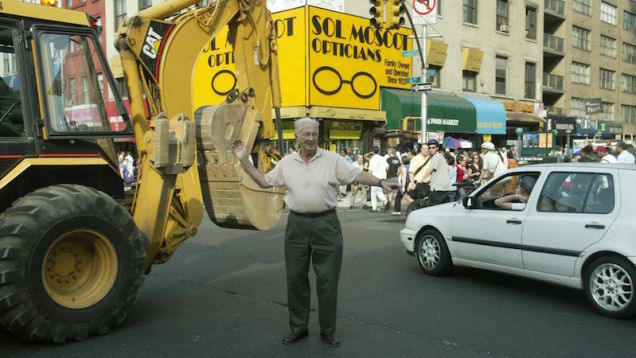
With the L train shutdown looming, some legislators are putting forward a radical proposal to make life easier for crosstown commuters: re-think 14th Street as a corridor for buses, bicycles, and pedestrians, with one large section that would blocked to cars entirely.
The idea is laid out in a letter to the chairpersons of the MTA and the city Department of Transportation that was signed by 10 elected officials representing Manhattan in the City Council, the State Assembly and Senate, and the U.S. House of Representatives, as well as the island’s borough president, Gothamist reports. The letter calls for a study of gridlock along 14th that may arise from the MTA’s repairs to damages to the L Train’s tubes from Hurricane Sandy, and notes one possible solution: Securing two lanes of traffic to serve buses exclusively, with the remaining lanes “transformed to accommodate pedestrians and cyclists and no private vehicles or taxicabs would be permitted.”
The lawmakers specifically cite a white paper published by the non-profit Regional Plan Association in April, titled “A New L Train for New Yorkers.” That plan, which also proposes a number of improvements to the L Train itself, calls for making the central chunk of 14th, stretching from Irving Place on the east side to 6th Avenue on the west, off-limits to private cars entirely. Outside of this stretch, car traffic would be restricted to one direction—away from the central stretch on either side—with bus traffic running unfettered in both directions along the entire street.
Advertisement
L Train outage aside, street redesign that reduces the primacy of cars has long been a goal for transit advocates. As the RPA proposal notes, in 2011, the city DOT under Janette Sadik-Khan attempted a similar car-free zone on 34th between the Empire State Building and Herald Square, with restricted car lanes and dedicated bus lanes along the rest of the street. The damage from Sandy presents a unique opportunity to put these changes in place at a time when even daily car commuters might understand the need for them. If the proposal moves forward, you can expect a push to make it permanent once the train is up and running again.













